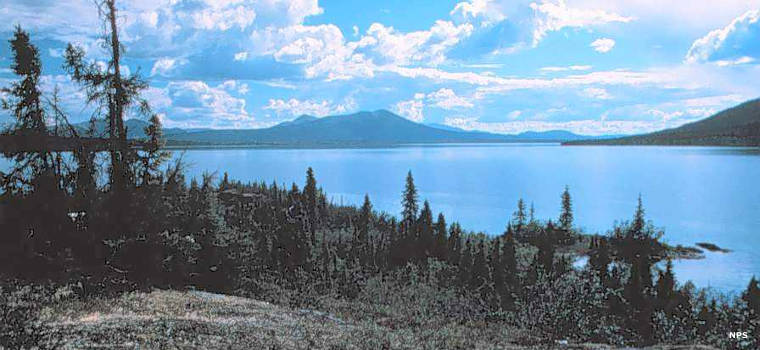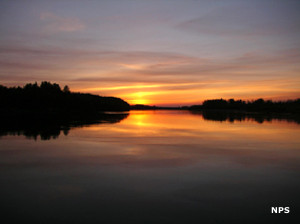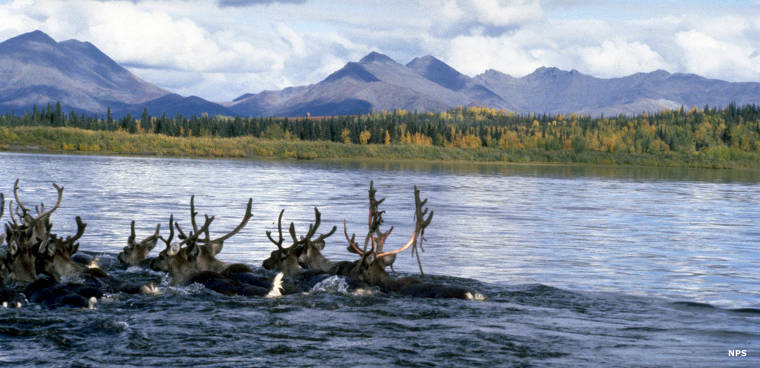Kobuk Wild and Scenic River

Walker Lake, in the upper Kobuk River Basin

Sunset along the Kobuk
110 miles of the upper Kobuk River, that stretch within Gates of the Arctic National Park, upstream of and including Walker Lake, were designated National Wild & Scenic River in 1980.
The entire river is about 180 miles long and is one of northwest Alaska's largest rivers. Elevations along the river vary from about 7,400 feet at its source to near sea level at its mouth. Most documentation says Walker Lake is the actual source of the Kobuk but it's not far from Walker Lake that the river exits the national park and traverses Kobuk Valley National Park before emptying in the Bering Sea along Kotzebue Sound.
Headwaters of the Kobuk are actually to the east of Walker Lake in the broad, heavily-glaciated valleys of the Endicott Mountains in the central Brooks Range. From the southern slopes of the Arcitic Divide the Kobuk flows through Upper and Lower Kobuk Canyons, then turns generally west in a broad wetlands-filled valley along the southern slopes of the Brooks Range.
Many float trips on the Kobuk begin with a float plane landing at Walker Lake to drop off people and equipment. The ride downstream from there is relatively tame, although the river is usually teeming with fish and lined with wildlife. Float trips that begin further upstream have some hurdles to pass before reaching Walker Lake. The Upper Kobuk Canyon offers a section of Class IV rapids that must be portaged (about 1/3 mile) and there are sections of Class II and III rapids in the lower canyon.
Artifacts found in the area suggest native people have been using the river corridor for some 12,500 years. A gold scam spread in 1898, a scam inviting many of the Klondike miners into the upper Kobuk Valley but very few actually arrived in the area and even fewer of those found any gold to speak of. But the Kobuk River Stampede is still noted in history books.
Walker Lake is glacier-fed, cold and teeming with grayling, trout and whitefish. Grayling are available the whole length of the river and average 14" to 18" in size. Come August and a sheefish (whitefish) run happens, featuring 36" to 40" fish.

Caribou crossing the river

Photos and map courtesy of the National Park Service